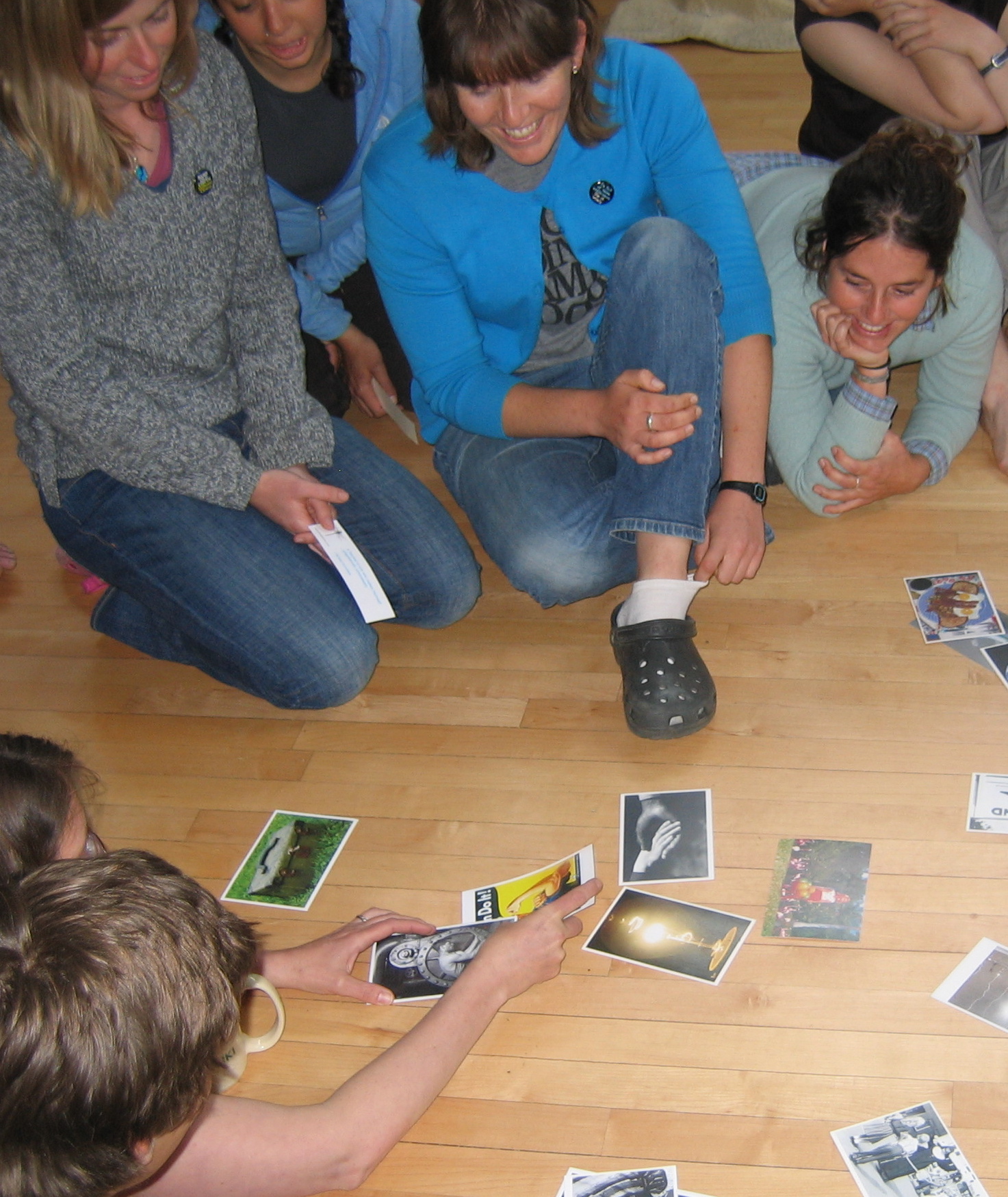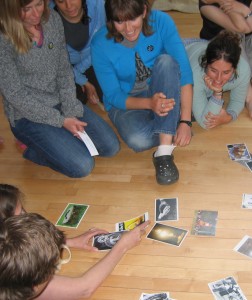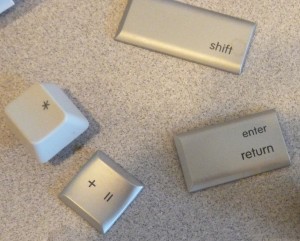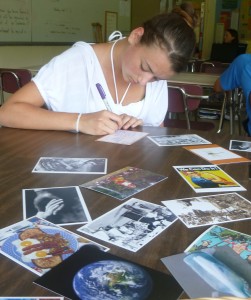
Jan 16, 2012 Resolutions, Reminders, Commitments: Reflective Activities to Help Your Groups Ring in the New Year
 These first weeks of January mark the return to work for many educators, students, community program and school staff. Whether you are an educator or business professional, January brings the beginning of the year, a new school term, the start of new programs, and for many, a tradition of making resolutions, goals, and personal commitments for change.
These first weeks of January mark the return to work for many educators, students, community program and school staff. Whether you are an educator or business professional, January brings the beginning of the year, a new school term, the start of new programs, and for many, a tradition of making resolutions, goals, and personal commitments for change.
Over the past week as I facilitate groups who are just returning to work or school after the holiday break, I have been taking advantage of this “opportunity mindset” to start the New Year off on the right foot. I have adapted some of my favorite reflective activities for learners to explore personal attitudes, goals, and commitments and offer reminders to carry their resolutions forward.
In past posts, I emphasized the value of using a novel activity to draw participants in, create interest, and help them transition into to the meeting or classroom space. This is especially important after a long break when students or group member’s minds have been focused outside of work or school, and many are ambivalent about returning to school or to the office.
Many of the transitional activities that I have shared in previous posts can be given a New Year’s or goal setting specific theme. One of my favorite methods is to create a collection of quotes printed on nice cardstock focused on themes of the New Year, new beginnings, goals and opportunity. I display the quotes on a table as participants enter the room and have them choose the one that resonates with them.
Depending on the group you could then have participants share their quote with a partner, journal about the quote and why they chose it, or share it with the whole group. Most importantly, invite them to keep their quote as a personal reminder of their reflections on the opportunity the New Year brings. (See previous posts on Strong Beginnings for more examples of using quotes in facilitation).
The past can’t see you, but the future is listening. ~Terri Guillemets
Hope is patience with the lamp lit. ~Tertullian
 Another activity for reflecting on New Year’s resolutions and goals is to use an “upcycled” computer keyboard key collection as a reflective prompt (Thanks to Andy La Pointe ). This past week I used them with middle school students at my local school and continued to be impressed with the buy in around this activity, and student’s ability to make a connection between their key and a personal goal or resolution. A group of 6th graders chose keys such as the window key “because I need to look more deeply into situations and people before making a quick judgment” or the @ key “because I need to focus on where I am AT i.e. when I am math class focus on math instead of sneaking peeks at my phone or when I am in homework club getting homework DONE instead of goofing off so I can actually have fun after school”. See the April 30th post for more on this activity.
Another activity for reflecting on New Year’s resolutions and goals is to use an “upcycled” computer keyboard key collection as a reflective prompt (Thanks to Andy La Pointe ). This past week I used them with middle school students at my local school and continued to be impressed with the buy in around this activity, and student’s ability to make a connection between their key and a personal goal or resolution. A group of 6th graders chose keys such as the window key “because I need to look more deeply into situations and people before making a quick judgment” or the @ key “because I need to focus on where I am AT i.e. when I am math class focus on math instead of sneaking peeks at my phone or when I am in homework club getting homework DONE instead of goofing off so I can actually have fun after school”. See the April 30th post for more on this activity.
My favorite reflective method for carrying learning forward and creating a tangible reminder of a key learning, goal, or commitment is to have participants choose a postcard from the various metaphoric images in my “Pick a Postcard” collection that represents a personal strength or goal and then write a note to their future self.
 In a post last June I shared a success story of using this postcard reminder activity to help students transition from middle to high school by first identifying a postcard image that represents their personal strengths and then participating in a reflective exercise to explore the key lessons they wanted to carry forward from middle school and personal goal or commitment to their 9th grade self. Students self addressed the cards, which their teacher and I sent to them in the fall.
In a post last June I shared a success story of using this postcard reminder activity to help students transition from middle to high school by first identifying a postcard image that represents their personal strengths and then participating in a reflective exercise to explore the key lessons they wanted to carry forward from middle school and personal goal or commitment to their 9th grade self. Students self addressed the cards, which their teacher and I sent to them in the fall.
I have continued to use this activity with many adult groups with great success. At some point during a workshop or training I often have participants choose a postcard that represents a personal strength, a strength they bring to their teaching, or to their work team. In group building situations instead of having them share their reasons for choosing their card to the group I have their colleagues or peers guess why they chose the card and how it represents their strengths. With this method the participant gets to hear some positive insights, complements and feedback from their peers (something many people don’t get enough of in their school or work lives).
 As a closing activity I have them write a personal commitment for the future about how they will use their strength, or how they will apply the lessons from our workshop to the future. During this time of year I encourage them to write a personal goal or resolution. I then send them the cards at a future date as a reminder of their personal strength, learning experience and/or personal goal. This is an adaptation of “Fan Mail” from Reflective Learning: Theory and Practice by Deb Sugerman, Kathryn Doherty, Daniel Garvey and Michael Gass 2000: Kendall Hunt Publishing Company).
As a closing activity I have them write a personal commitment for the future about how they will use their strength, or how they will apply the lessons from our workshop to the future. During this time of year I encourage them to write a personal goal or resolution. I then send them the cards at a future date as a reminder of their personal strength, learning experience and/or personal goal. This is an adaptation of “Fan Mail” from Reflective Learning: Theory and Practice by Deb Sugerman, Kathryn Doherty, Daniel Garvey and Michael Gass 2000: Kendall Hunt Publishing Company).
This time of year is ripe with the opportunity to initiate meaningful reflective conversations with your groups, help learners create lasting lessons from experience and make resolutions and goals a reality in their day-to-day lives. I encourage you to think about how some of your some of your favorite reflective tools and techniques can be adapted to help group members create tangible reminders of their learning and goals. Please share your thoughts or ideas.
Best wishes for a strong start to 2012!



Roger Greenaway
Posted at 07:32h, 17 JanuaryJennifer – I like how you introduce stimulation with quotes or bits of a keyboard or pictures. Choosing, touching, moving things all helps to make reflection a little less abstract and more visible and more ‘committing’ – visual aids for both reflection and communication. I have had even more success when students bring in their own ‘stuff’ – things they have found on the beach, things that matter to them or that inspire them, or stories they have heard that have made them think. This kind of approach helps to stimulate reflection outside the classroom and bring reflections into the classroom. This helps to overcome the problem that classrooms are not really designed with reflection in mind – and people of all ages will often reflect more when they have the time, the space and the right kind of ‘stuff’ to hand.